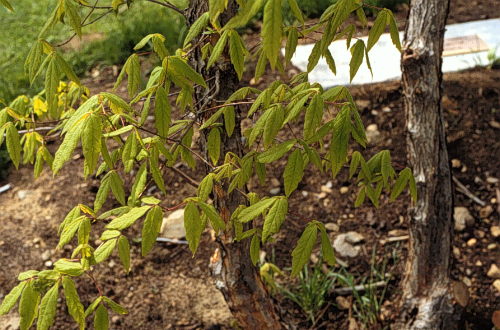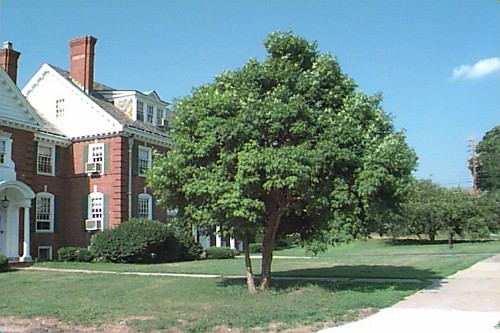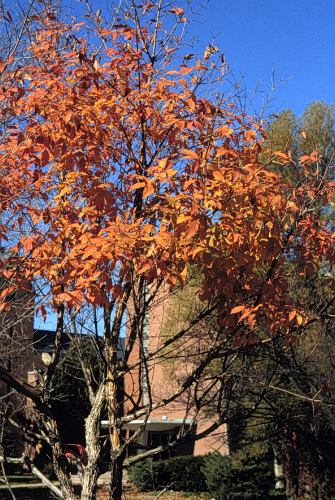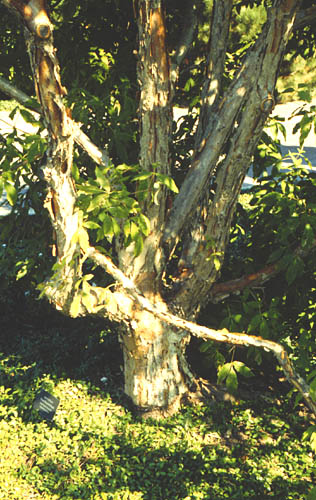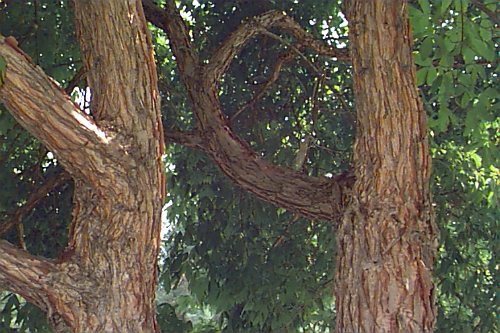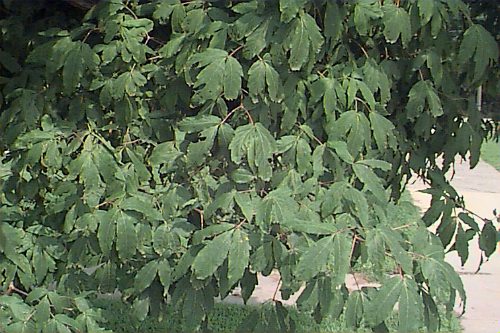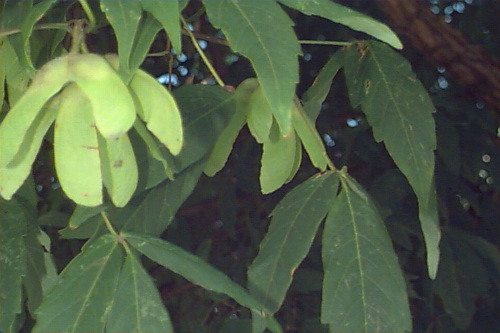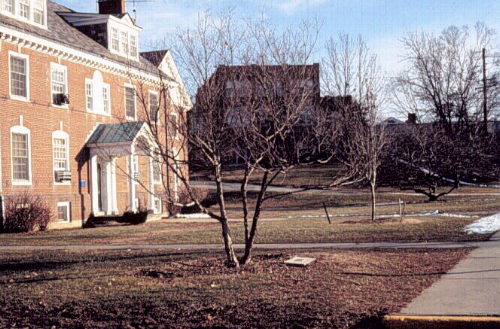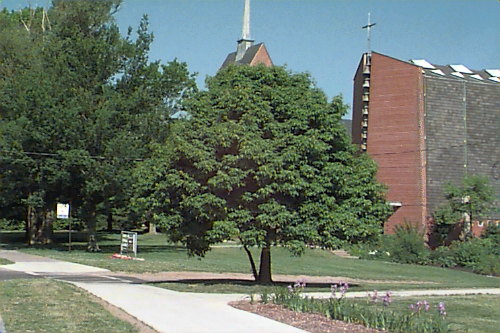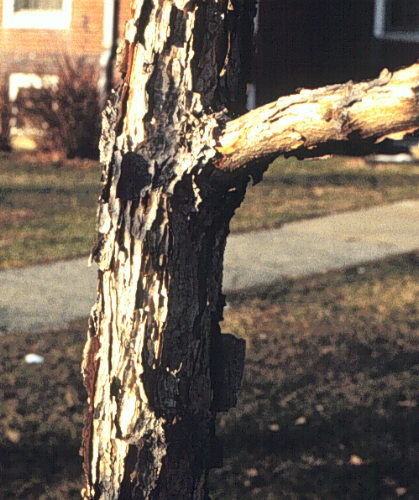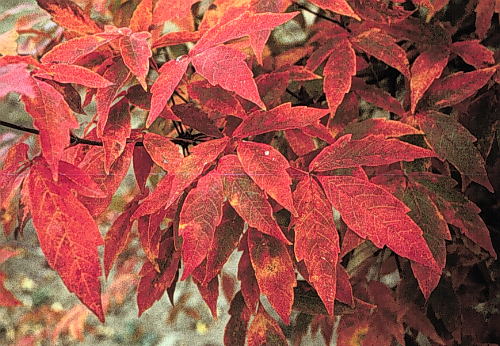Acer triflorum
Three-flower Maple
Aceraceae
ExpandHabitat
- native to Manchuria and Korea
- zone 5; likely hardy in zone 4, as well
Habit and Form
- small shade tree
- deciduous
- a slow growing plant
- rounded crown, densely branched
- 20' to 30' tall, to 45' in the wild
- fine to medium texture
- similar to A. griseum or A. nikoense in habit and form
Summer Foliage
- opposite, trifoliolate leaves, with leaflets 2" to 3" long and 1" wide
- dark green color
Autumn Foliage
- late October
- overall orange in effect, with reds and orange-reds present
Flowers
- greenish-yellow, inconspicuous
- in clusters of three (hence, common name)
Fruit
- samara, 1" to 1.25" long, set in pairs joined at a wide angle
- nutlet fat, pubescent
Bark
- ash-brown
- exfoliates in long, vertical strips
- very ornamental
Culture
- relatively pest free
- prefers acid, moist, well-drained soil
Landscape Uses
- specimen or focal point
- a rare plant which makes a good point of interest
Liabilities
- not easy to find in cultivation
ID Features
- trifoliolate leaves, somewhat fuzzy and thicker than Acer cissifolium
- exfoliating gray bark; not red (like A. griseum) or smooth (like A. nikoense or A. cissifolium)
- flowers after A. nikoense and before A. griseum
- fruit fuzzier than that of A. griseum
Propagation
- by seed, but very low germination rate (similar to Acer griseum)
- can be grafted onto other trifoliolate maples
Cultivars/Varieties
- none
